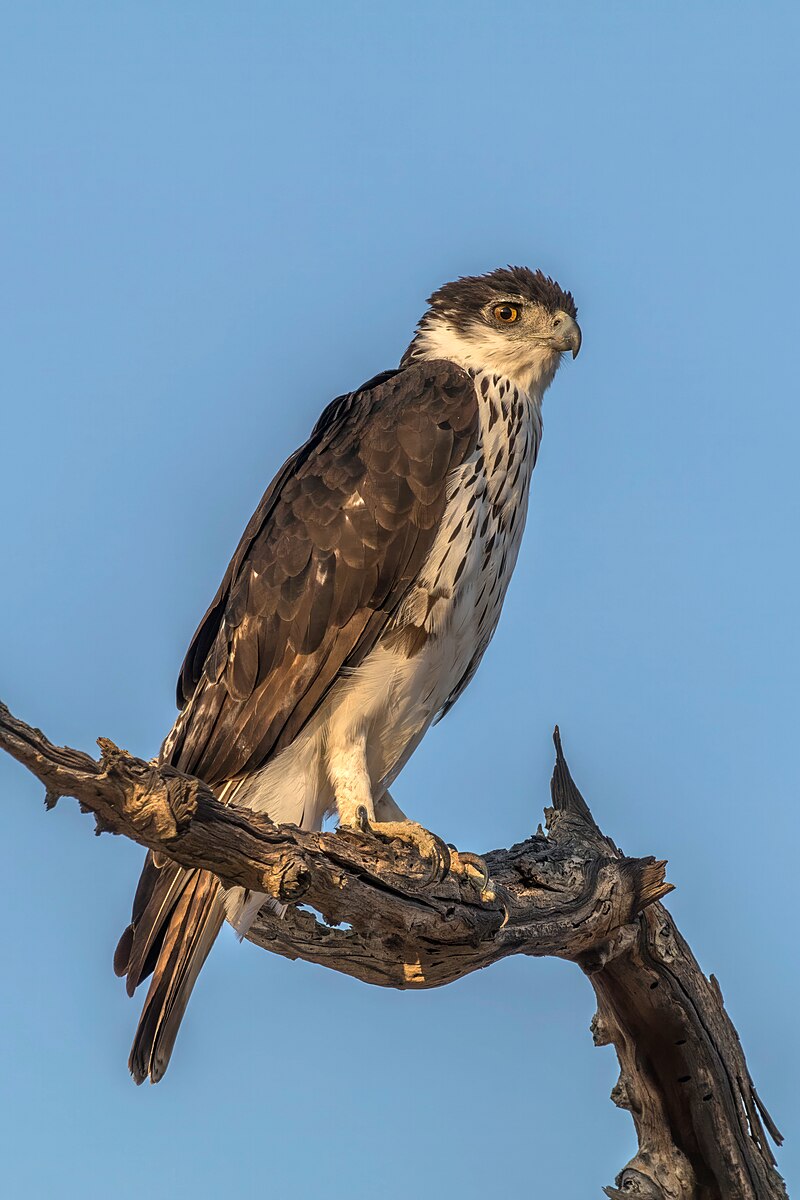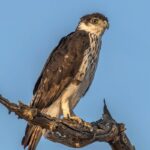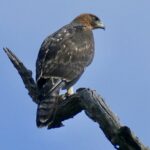The African Hawk Eagle, a majestic bird of prey found in sub-Saharan Africa, is known for its aggressive behavior in protecting its nest and offspring. As an apex predator in its ecosystem, the African Hawk Eagle employs various strategies to safeguard itself and its young from potential threats.
Parental Aggression: The First Line of Defense
The parent African Hawk Eagles are highly aggressive in protecting their nest. They regularly dive on any threatening or novel animals that approach their nest, making it a crucial strategy for safeguarding their eggs and hatchlings from potential predators.
Facial Disk: Enhancing Auditory Perception
 Image source: African hawk-eagle by Charles J. Sharp
Image source: African hawk-eagle by Charles J. Sharp
The African Hawk Eagle, like its counterpart the Black Hawk-eagle, possesses a facial disk that helps direct sounds to their ears. This adaptation improves their ability to locate prey in the dense forests they inhabit, where visibility may be limited. This enhanced auditory perception also aids in detecting and responding to potential threats.
Territoriality: Defending the Nest with Ferocity
African Hawk Eagles are highly territorial birds and will attack virtually anything that tries to get near their nest. Their hooked beaks and sharp talons are formidable weapons that can scare away even the most persistent predators.
Camouflage: Blending into the Surroundings
The African Hawk Eagle’s plumage, a mix of blacks, whites, and grays, provides effective camouflage in their dry, woodland habitats. This coloration, combined with their bright yellow eyes and yellowish legs, helps the bird blend seamlessly into its environment, making it harder for potential predators to spot.
Conservation Status and Threats
Despite being categorized as a species of Least Concern, the African Hawk Eagle faces significant threats to its survival. Habitat loss due to deforestation and human activities, as well as persecution by farmers due to predation on domestic chickens and other fowl, have led to a decline in their population over the past few decades.
The Peregrine Fund, a conservation organization, is actively studying and working to protect the African Hawk Eagle and its habitat in Kenya. Their efforts focus on understanding the causes for the bird’s decline, tracking its movements, and studying its reproductive rates. They are also working to protect all raptors and their habitats in the region, as well as promoting environmental education and community development.
Conclusion
The African Hawk Eagle is a remarkable bird of prey that employs a range of strategies to protect itself and its young. From its aggressive parental behavior to its specialized adaptations, the African Hawk Eagle is a testament to the resilience and adaptability of nature. However, the species faces ongoing threats, and conservation efforts are crucial to ensuring its continued survival in the wild.


